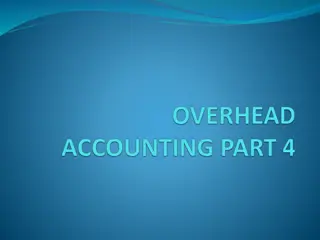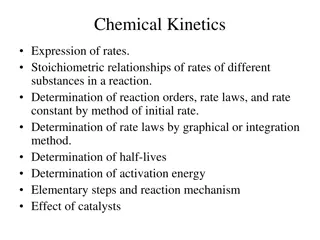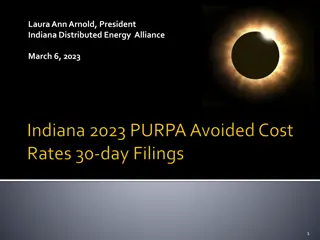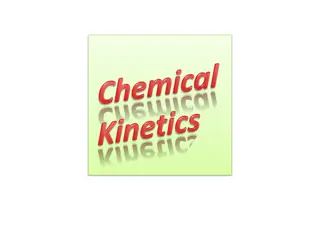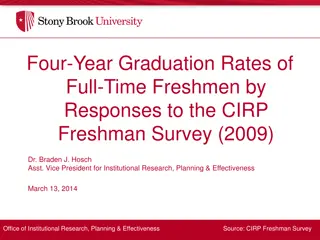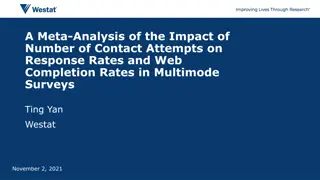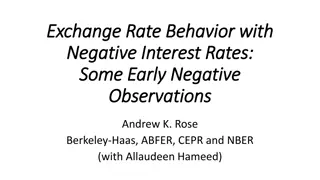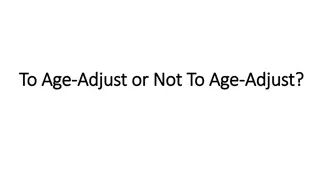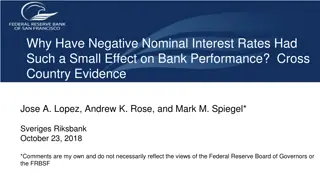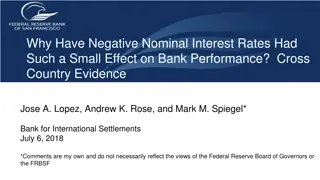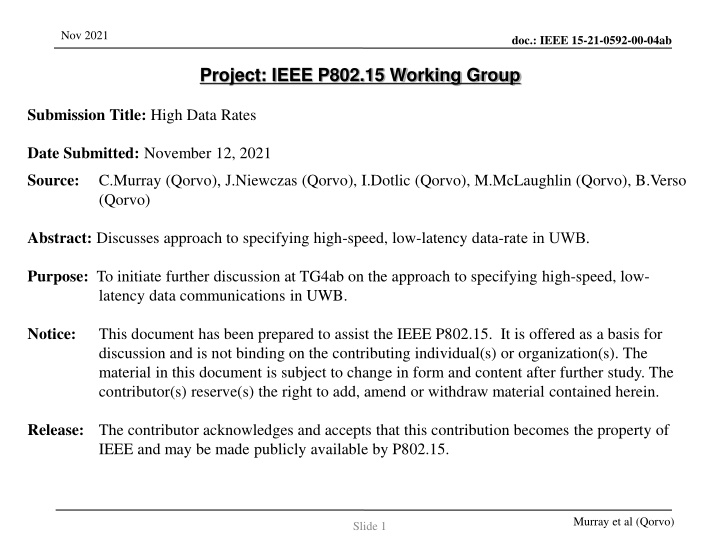
Enhancing UWB Data Rates: IEEE 802.15 Working Group Submission
Explore the initiative to specify high-speed, low-latency data rates in Ultra-Wideband (UWB) technology through various improvements such as interference mitigation, coexistence enhancements, backward compatibility, increased throughput, and more, aiming to advance data communications in UWB technology.
Download Presentation

Please find below an Image/Link to download the presentation.
The content on the website is provided AS IS for your information and personal use only. It may not be sold, licensed, or shared on other websites without obtaining consent from the author. If you encounter any issues during the download, it is possible that the publisher has removed the file from their server.
You are allowed to download the files provided on this website for personal or commercial use, subject to the condition that they are used lawfully. All files are the property of their respective owners.
The content on the website is provided AS IS for your information and personal use only. It may not be sold, licensed, or shared on other websites without obtaining consent from the author.
E N D
Presentation Transcript
Nov 2021 doc.: IEEE 15-21-0592-00-04ab Project: IEEE P802.15 Working Group Submission Title: High Data Rates Date Submitted: November 12, 2021 Source: C.Murray (Qorvo) , J.Niewczas (Qorvo), I.Dotlic (Qorvo), M.McLaughlin (Qorvo), B.Verso (Qorvo) Abstract: Discusses approach to specifying high-speed, low-latency data-rate in UWB. Purpose: To initiate further discussion at TG4ab on the approach to specifying high-speed, low- latency data communications in UWB. Notice: This document has been prepared to assist the IEEE P802.15. It is offered as a basis for discussion and is not binding on the contributing individual(s) or organization(s). The material in this document is subject to change in form and content after further study. The contributor(s) reserve(s) the right to add, amend or withdraw material contained herein. Release: The contributor acknowledges and accepts that this contribution becomes the property of IEEE and may be made publicly available by P802.15. Murray et al (Qorvo) Slide 1
Nov 2021 doc.: IEEE 15-21-0592-00-04ab PAR Objective Safeguards so that the high throughput data use cases will not cause significant disruption to low duty-cycle ranging use cases Interference mitigation techniques to support higher density and higher traffic use cases Other coexistence improvement Backward compatibility with enhanced ranging capable devices (ERDEV Improved link budget and/or reduced air-time Additional channels and operating frequencies Improvements to accuracy / precision / reliability and interoperability for high-integrity ranging Reduced complexity and power consumption Hybrid operation with narrowband signaling to assist UWB Enhanced native discovery and connection setup mechanisms Sensing capabilities to support presence detection and environment mapping Low-power low-latency streaming Higher data-rate streaming allowing at least 50 Mbit/s of throughput Support for peer-to-peer, peer-to-multi-peer, and station-to-infrastructure protocols Infrastructure synchronization mechanisms Murray et al (Qorvo) Slide 2
Nov 2021 doc.: IEEE 15-21-0592-00-04ab High Data-Rates C.Murray(Qorvo) , J.Niewczas (Qorvo), I.Dotlic(Qorvo), M.McLaughlin (Qorvo), B.Verso (Qorvo) Murray et al (Qorvo) Slide 3
Nov 2021 doc.: IEEE 15-21-0592-00-04ab Building on the following previous submissions 15.4ab Technical Guidance Framework <15-21- 0268-00-04ab>, May 2021, Benjamin Rolfe (Blind Creek Associates) Talk about ways to support a higher data rate with the HRP UWB PHY <15-21- 0501-00-04ab>, Sept 2021, Chenchen Liu (Huawei) Advanced Coding for Data Communications in 802.15.4ab <15-21- 0506-01-04ab>, Nov 2021, Carlos Aldana (Facebook) Murray et al (Qorvo) Slide 4
Nov 2021 doc.: IEEE 15-21-0592-00-04ab Introduction 50 Mbps, low latency throughput at the MAC The low-latency of UWB is a feature that could open up new markets Since high data rate applications must not monopolize the channel , the PHY data rates may need to be significantly higher than the MAC rate Implementing this will require a significant effort and therefore we need to capture the use cases and identify the requirements for an appropriate design The purpose of this submission is to initiate the discussion and agree the steps to achieve this Murray et al (Qorvo) Slide 5
Nov 2021 doc.: IEEE 15-21-0592-00-04ab Need Use cases to Select the PHY level data rate(s) and modulation needed to support the defined use cases Select the PHY level packet lengths and packet structures needed to support the defined use cases Discuss whether PHY level inter-packet protocols are required or not ACK/NACK HARQ (CC, P-CC, IR) Tx power control Requirements without use cases => difficult to make informed trade-offs Murray et al (Qorvo) Slide 6
Nov 2021 doc.: IEEE 15-21-0592-00-04ab As an example Here are some modulation options for ~250Mbps PRF256 BPSK with puncturing code rate = 0.85 => 212 Mbps is achievable would require 4-5dB extra SNR, but it is relatively easy to implement. PRF256 BPSK with MIMO, code rate = 0.5 Requires 2Tx, 2Rx PRF256 QPSK, code rate = 0.5 Adds some complexity to Tx and Rx PRF 512 BPSK, code rate = 0.5 No gaps - higher susceptibility to interference Each option has its merits - the best design trade offs can only be selected with reference to use cases and the operating environment and the channel models Murray et al (Qorvo) Slide 7
Nov 2021 doc.: IEEE 15-21-0592-00-04ab Need Channel Models to Identify environment specific performance issues for the chosen data rates Help delimit the performance requirements of each part of the receiver Modern block codes will improve link margin but require a minimum input Eb/N0 before they switch-on The pre-decoder receiver needs to operate in and deliver this SNR for all the environments of interest Channel models will facilitate the design of an architecture with the appropriate trade offs that achieves the specified use case performance requirement e.g., power consumption versus performance Murray et al (Qorvo) Slide 8
Nov 2021 doc.: IEEE 15-21-0592-00-04ab Potential issues already identifiable using existing channel models Currently do not have channel models for high-speed data environment Using CM1 channels as a stand-in proxy as they are rich in multi-path and dispersive. 20-byte payload (BER requirement is not demanding) Decoder (CC, k=7, CR = 0.5) Channel Matched Filter deficiencies start to show up at 125 Mbps and higher rates as ISI becomes important => An Equaliser could resolve most multipath related collisions and reduce ISI where it is significant What are the things we don t know about without application specific channel models? Murray et al (Qorvo) Slide 9
Nov 2021 doc.: IEEE 15-21-0592-00-04ab Modulation, Pulse grids and EQL For a constant PRF, the pulse groupings within the symbol is an important design parameter to control susceptibility to interference There are a range of options - for example, for BPSK, code rate = 0.5 62 Msps BPSK 125 Msps BPSK Ideally the receiver architecture for all the higher data rates should be as similar as possible here again we need use cases and channel models to make the best-informed selection Murray et al (Qorvo) Slide 10
Nov 2021 doc.: IEEE 15-21-0592-00-04ab Advanced codes (Turbo, LDPC, Polar) It is likely that higher data rate use cases will need to support large packet sizes The current decoder architecture (CC, k=7) suffers from degraded performance with larger blocks More advanced decoders improve performance especially as the payload size increases. As such, they could offer significant improvement for high throughput applications but need to be evaluated with respect to use cases and channel models The Eb/N0 (dB) requirement of severals decoders to achieve PER=0.001 is shown below. BITS coding-rate TDEC(8) 1024 0.50 2.0 1.8 2.3 4.5 8192 0.50 1.6 1.3 1.6 5.1 LDPC(16) POLAR(4) CC(K=7) Murray et al (Qorvo) Slide 11
Nov 2021 doc.: IEEE 15-21-0592-00-04ab Identifying the decoder technology is not enough Selecting the correct decoder technology requires Specifying the performance requirement Specifying the code block sizes that best support the use cases and any associated protocols Quantifying the costs (power, silicon area, latency etc) of achieving these for each candidate technology is crucial As an example, the 2 LDPC codes already referenced have significantly different characteristics chosen to match their use cases IEEE 802.11n LDPC supports 3 coded block sizes 648, 1296 and 1944 bits 3GPP 5G NR LDPC BG1 supports 51+ coded block sizes - ranging from 132 to 25344 bits (targets a BLER of 10-5 and also supports IR HARQ) Murray et al (Qorvo) Slide 12
Nov 2021 doc.: IEEE 15-21-0592-00-04ab Recommendations 1/2 1. Agree on use cases for high-speed, low latency data This frames the necessary analysis for all subsequent points A significant challenge for other technologies in evolving their data streaming capabilities is maintaining backword compatibility we have a clean slate As UWB does not have a streaming legacy, it has the opposite challenge of taking the correct first steps, but we have the advantage of being able to learn from others mistakes 2. Develop channel models for the high-speed, low latency environment 3. Work to agree a modulation scheme for high-speed data 4. Work to agree a symbol structure high-speed data Murray et al (Qorvo) Slide 13
Nov 2021 doc.: IEEE 15-21-0592-00-04ab Recommendations 2/2 5. Explore implications of high-speed, low latency data on packet structures 6. Identify suitable candidate advanced codes for high-speed data 3GGP 5G NR and IEEE 802.11n LDPC have already been suggested Need candidates for Turbo and Polar codes and possibly additional LDPC Power consumption at a given performance should be a central selection metric A note on Preamble Sequences Although not covered in this submission we note that discussion on alternative preamble sequences has already been initiated within the group, and on this topic too, we see a benefit for this discussion to be tied to defined use cases and design trade-offs before the group decides on what the solution should be. Murray et al (Qorvo) Slide 14
Nov 2021 doc.: IEEE 15-21-0592-00-04ab Backup Slides Murray et al (Qorvo) Slide 15
Nov 2021 doc.: IEEE 15-21-0592-00-04ab Current State of Affairs IEEE 802.15.4z supports maximum data rates up to 31.2 Mbps at the PHY layer Features k=7 convolutional encoder without Reed-Solomon error correction PHR and Data use the same CC with tail bits for each section G0 and G1 pulses separated by guard interval 31.2 Mbps: Murray et al (Qorvo) Slide 16
Nov 2021 doc.: IEEE 15-21-0592-00-04ab Turbo Codes Turbo codes are known to suffer from the error floor , where the BLER stops dropping as the SNR increases. This is caused by inefficiencies related to rate matching/puncturing for certain block sizes/coding rates. As the large blocks consist of smaller sub-blocks, performance will depend on the sub-block partitioning. Good and bad sub-blocks have been presented below for two example coding rates. A system designer can either select more efficient sub-blocks or use different puncturing parameters. coding coding- -rate=0.8 rate=0.8 bits bits SNR SNR: : 6144 6144 2.9e 6080 6080 5.1e 6016 6016 2.5e 5952 5952 2.5e 5888 5888 1.2e 5824 5824 1.1e 5760 5760 2.5e 5696 5696 2.0e 5632 5632 4.7e 5568 5568 0 0 3.3e 5504 5504 3.3e 3.3e- -5 5 2.4e coding coding- -rate=0.5 rate=0.5 BLER BLER dB SNR SNR: : 1.8 bits bits 1.8dB BLER BLER dB 6.1 6.1dB 2.9e- -6 6 1.5e 5.1e- -6 6 1.5e 2.5e- -4 4 1.1e 2.5e- -6 6 0.7e 1.2e- -6 6 0.7e 1.1e- -3 3 2.4e 2.5e- -5 5 1.2e 2.0e- -6 6 8.0e 4.7e- -6 6 1.3e 6.5 6.5dB 1.5e- -6 6 1.5e- -6 6 1.1e- -4 4 0.7e- -7 7 0.7e- -7 7 2.4e- -4 4 1.2e- -5 5 8.0e- -7 7 1.3e- -6 6 3.3e- -7 7 2.4e- -5 5 dB 6144 6144 5.9e 6080 6080 0.6e 6016 6016 9.4e 5952 5952 0.6e 5504 5504 1.1e 5440 5440 1.3e 5.9e- -6 6 0.6e- -6 6 9.4e- -6 6 0.6e- -6 6 1.1e- -6 6 1.3e- -6 6 Murray et al (Qorvo) Slide 17
Nov 2021 doc.: IEEE 15-21-0592-00-04ab Characteristics for Low Latency Communication (from <15-21- 0268-00-04ab> ) Low latency == a few milliseconds Must not monopolize the channel Ensure coexistence with ranging operations Provide sharing with many devices Include interference reduction and mitigation techniques Moderate duty cycle and activity factor Higher bit rate lower duty cycle Can be very short distances (moderate link budget) Low energy consumption Multiple topologies Peer to peer, , peer-to-multi-peer, and station-to-infrastructure Cost sensitive Low cost and low complexity circa 2021 Murray et al (Qorvo) Slide 18




